While many people enjoy a bowl of noodles and famous rice dishes from Southeast Asia, not everyone is familiar with the fruits and vegetables that form the foundation of the region’s cuisine. Prepare your taste buds to savor some of the most delicious and unique fruits and vegetables in Southeast Asia.
While many people enjoy a bowl of noodles and famous rice dishes from Southeast Asia, not everyone is familiar with the fruits and vegetables that form the foundation of the region’s cuisine. Prepare your taste buds to savor some of the most delicious and unique fruits and vegetables in Southeast Asia.
1. Dragon Fruit

A direct translation of its name, Dragon Fruit is widely grown in the Mekong Delta. Dragon fruit has a strange appearance, with a thick, reddish-purple skin and thin green extensions. Inside, the flesh is white or pink with small seeds.
How to Eat
Despite its intimidating look, dragon fruit is easy to eat. Choose a ripe fruit with bright red skin, an even color, and a slight softness when squeezed. Use a sharp knife to cut straight through the fruit and slice it in half. You can scoop the fruit out of the skin with a spoon or peel the skin off and cut the flesh into small pieces.
Flavor
If you like pears and kiwis, you’re in luck, as many people describe dragon fruit as having a flavor similar to a combination of these two fruits, with a hint of citrus. The flesh of dragon fruit is mildly sweet and refreshing, with a texture similar to ripe kiwi. However, if the dragon fruit is not yet ripe, the flesh will be firmer and almost flavorless.
2. Longan

Longan is a popular fruit in Vietnam and can often be seen in large baskets at street markets across the country. In Vietnamese, longan means “dragon’s eye.” This fruit is often compared to lychee but is a bit sweeter and meatier.
How to Eat
This fruit is extremely easy to eat. All you need to do is peel off the thin, paper-like skin or layer of flesh around the fruit. You can use your fingernail to dig in or gently squeeze the fruit to open it. Vietnamese people often enjoy longan on its own with a cup of tea or in sweet iced desserts with lotus seeds as a perfect treat for a hot summer day.
Flavor
Longan is very juicy, mainly water, and has a high natural sugar content, so it is very sweet. The translucent flesh has a grape-like consistency and also tastes like grapes. It also has a tropical flavor with a subtle hint of musk. However, the musk flavor is not unpleasant.
3. Lychee
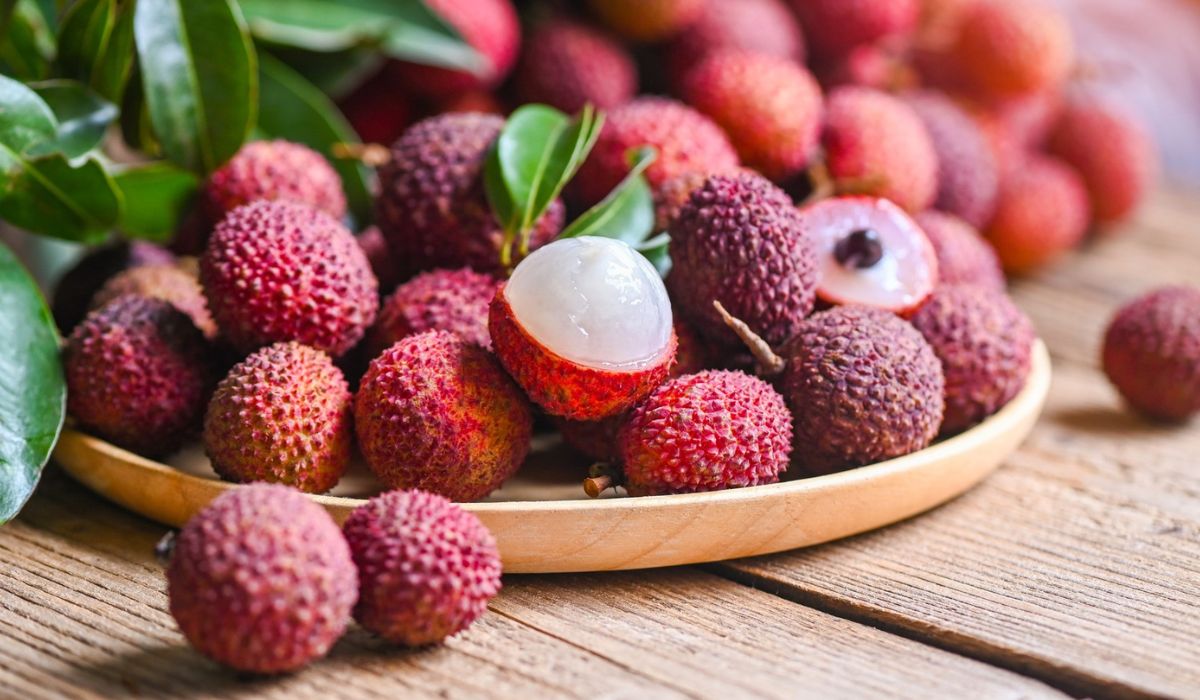
Lychee is also a common fruit in Southeast Asia, especially in Vietnam. It grows on a tropical evergreen tree, producing small fruits about 1 inch wide, with a red, rough, inedible skin. Inside is a sweet, white flesh often used in desserts. This fruit is usually eaten fresh and is very high in vitamin C. Although lychee is widely sold in cans, the canning process loses much of the fruit’s distinctive flavor. Lychee can also be used to make martinis with a delicious taste.
How to Eat
Don’t let its tough appearance scare you. First, separate the lychee fruit from the stem. From there, the red, rough skin can be easily peeled off (or popped off by squeezing from the opposite end) to reveal the fruit that feels like peeled grapes. Eat the lychee fruit like you would a cherry, discarding the seed. For the best flavor, don’t peel the lychee until you’re ready to eat it or use it immediately.
Flavor
Lychee has a sweet, floral, and slightly tangy flavor. When bitten, you’ll experience a fresh taste, resembling strawberries or pears with a hint of citrus. Some people even compare the floral flavor to that of rose flowers.
4. Sugar Apple

In Southeast Asia, Vietnam is home to two types of sugar apples, each offering a unique texture and flavor. Regardless of the shape, sugar apples have a rough green skin surrounding creamy white flesh with a sweet, pleasant flavor. While the skin and seeds are inedible, the ripe fruit can be easily peeled or broken open by hand to reveal the delicious flesh inside. Whether sliced or eaten with a spoon, sugar apple remains an enjoyable treat for those who want to savor tropical flavors.
How to Eat
First, you need to remove the skin as well as the seeds, as they are inedible. Then you can scoop out the flesh and eat it on its own, add it to smoothies, incorporate it into baked goods (such as cakes or crumbles), or even add it to savory dishes – sugar apple pairs well with certain stir-fries or curries.
Flavor
Don’t let their strange appearance discourage you: sugar apples are very sweet, similar to bananas or pineapples. The flesh has a pear-like consistency with a creamy texture.
5. Mangosteen

Mangosteen is one of the strangest fruits you can try in Vietnam. It is only available seasonally from May to August. With its thick purple skin and soft, sour flesh, mangosteen is easy to find at supermarkets and street vendors throughout Vietnam.
How to Eat
Gently squeeze along the middle of the fruit to separate the skin and carefully peel it away. Pop out a segment and enjoy the taste! Note: larger fruits may contain seeds. You can also enjoy mangosteen with various dishes, particularly in hearty Southern Vietnamese salads.
Flavor
Ripe mangosteen has a wonderfully delicate sweet and tangy flavor, similar to a tutti-frutti mix of strawberries, pineapples, lychees, and peaches; its segments have juicy white flesh with a plum-like texture, and some fruits contain seeds. Unripe mangosteen (green) has a juicy, slightly crunchy texture.
6. Pomelo
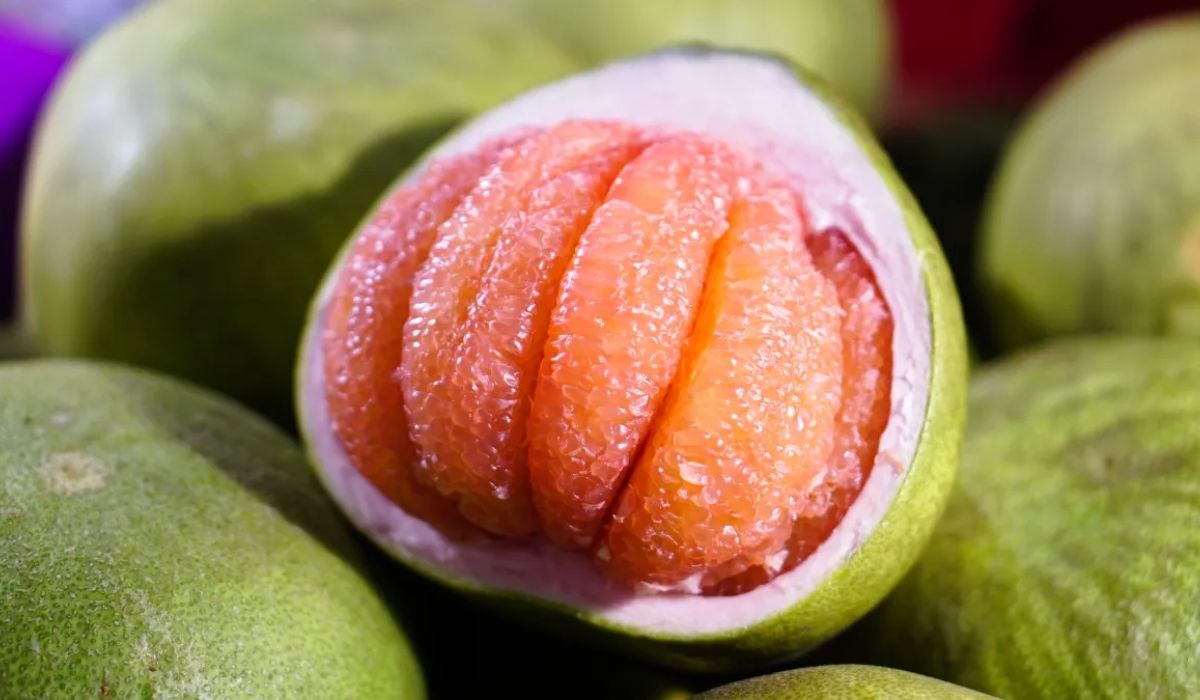
Pomelo has a sour taste similar to grapefruit but is milder. Although it may seem intimidating, pomelo is definitely worth trying. This large, slightly elongated citrus fruit is green and pale yellow when ripe. You can find pomelo in Vietnam year-round and even display it during special occasions. When you open the pomelo, you’ll find thick white pith blocking the pale yellow or pinkish flesh. The flesh, when separated from the pith, has a bitter taste and consists of many segments with small seeds full of water. Pomelo is also a common ingredient in Vietnamese salads like Gỏi Bưởi.
How to Eat
Use pomelo the same way you use grapefruit. It is delicious eaten raw as a snack but can also be prepared into:
-
Marmalade: Make pomelo marmalade as you would with oranges.
-
Fruit Salad: Add pomelo to both sweet and savory fruit salads for a zesty citrus flavor.
-
Candy: Make candied pomelo rind and coat with chocolate.
-
Juice: You can drink fresh pomelo juice on its own or use it in cocktails like Paloma or Greyhound.
-
Marinade: The acidity in pomelo juice tenderizes raw meat, making it an ideal marinade for meat or fish.
Flavor
There are different varieties of pomelo, and they all have slightly different flavors. However, most have a flavor similar to grapefruit, with a tangy sourness and dominant sweet taste. Unlike grapefruit, pomelo has a lighter taste and less bitterness.
7. Mango
.jpg)
Mango might be one of the most popular fruits on the list, but in Vietnam, it is definitely worth trying. Vietnamese people love eating green mangoes as a snack, dipped in chili salt, and chopped into green mango salad.
How to Eat
Cut the mango around the large seed with a sharp knife and carefully slice the fruit in half. Another method is to cut around the seed and slice along the length of the skin. When you bend the skin back, the fruit almost stands up on its own, making it easy to eat from the skin. Mango can also be used to make great salads and delicious dishes, perfect for a hot summer day.
Flavor
Juicy, sweet, and fragrant, mangoes have delighted the world for many millennia. Their complex flavor ranges widely: from fresh orange to juicy peach, tropical pineapple, cucumber rind, and sweet caramel!
8. Rambutan

With its whimsically named “hairy” exterior, Rambutan is both tasty and colorful. Its vibrant, hairy appearance hides translucent white flesh with a sweet and mildly tangy taste, similar to lychee. This Vietnamese fruit is harvested twice a year, making it easy to find in summer and even winter.
How to Eat
Vietnamese people enjoy rambutan as a healthy and refreshing fruit. Gently squeeze the fruit and twist to remove the outer skin and reveal the flesh, then enjoy! If you can’t peel it, just let it ripen a bit more.
Flavor
Its flavor is similar to lychee, as they belong to the same family. Rambutan has a sweet, fruity taste with a hint of tartness reminiscent of strawberries and grapes. Additionally, it has floral, tropical notes.
9. Durian

Often hailed as the "King of Fruits", Durian is an unusual tropical fruit that grows throughout Southeast Asia. A large, spiky outer shell reveals creamy, custard-like flesh that is not only sweet but also notoriously has a very strong odor. Durian is highly nutritious and healthy, suitable for both savory and sweet dishes, and is used to make specialties like durian cakes and puffs, durian ice cream or shaved ice, durian fritters, tempoyak (fermented durian), and durian lempok (a sweet durian candy).
How to Eat
Opening a durian’s hard, spiky shell usually requires wearing gloves or protective hand coverings. You need to cut through the shell with a knife and use your hands to pry the shell open before gently separating the durian flesh. Then you can eat it on its own, pair it with sticky rice, or use it as an ingredient in various dishes.
Flavor
Fresh, ripe durian has a wonderfully delicious and sweet flavor. It is often described as custard-like, and its taste is compared to caramel, vanilla, and even cheesecake. The soft and slightly creamy texture of durian, combined with its rich and robust flavor, makes it an ideal ingredient for desserts—though it is sometimes used in savory recipes as well.
10. Sapodilla

With its brown, rough skin and sweet, salmon-colored flesh, Sapodilla offers a creamy texture reminiscent of sweet potatoes and squash. To enjoy this exotic fruit, simply cut it in half, remove the large seed, and savor the sweet, rich flesh—a delightful blend of sweetness and creaminess. Sapodilla’s versatility shines in savory dishes, adding a touch of sweetness to curries and sauces.
How to Eat
In addition to enjoying the sweet, delicious flavor directly from the fruit, you can incorporate it into various recipes. You can add the fruit to oatmeal or yogurt for a tasty breakfast. Cooking sapodilla can enhance its flavor, providing a caramelized taste in both sweet and savory recipes. The fruit can be added to soups, jams, roasted meats, and seafood. It can also be blended into juices, smoothies, and cocktails. We recommend adding it to vanilla ice cream to highlight its cinnamon-like flavor!
Flavor
Sapodilla has a pear-like sweetness. A ripe sapodilla is often described as tasting like brown sugar, somewhat similar to the flavor of cinnamon toast.
11. Wampee

Wampee or wampi is a small evergreen tree native to northern Vietnam, southern China, and Laos. The fruit is round to oblong and grows in clusters. The juicy flesh of the fruit is grape-like, with a sweet to slightly sour taste. Ripe wampee is often eaten fresh or used in fruit salads and various desserts.
In Vietnam, wampee is considered a delicacy, used to make jams, jellies, and drinks, while in China, wampee slices are a component in savory dishes made with chicken and meat. Popular varieties include Chi Hsin, known for its sweet flavor, and Guy Sam, famous for its sour and sweet aroma.
How to Eat
First, wash the fruit thoroughly—the hairy skin can easily gather dust. Eat wampee like you would lychee or longan: peel off the thin, soft skin and enjoy the flesh inside. There are one to five large, green-black seeds in the middle that are not edible but easy to remove. The slightly gelatinous skin can be eaten for those impatient to get to the spicy flesh.
Flavor
Wampee primarily has a sour taste with a touch of sweetness. The texture is jelly-like, with a lot of juice: be prepared for sticky fingers when eating. The flavor has similarities to its citrus relatives: tart, tangy, with a slight metallic aftertaste. The subtle sweetness in wampee amid the strong sour notes resembles peach and pineapple.
12. Starfruit

When ripe and yellow, Starfruit has a refreshing and juicy taste. Its season is unpredictable, as the tree flowers twice a year. The good news is that you can enjoy this tangy delight year-round, though you are more likely to find it in the Mekong Delta.
How to Eat
Slice the starfruit crosswise into smaller pieces and remove the seeds in the middle. Since the skin is thin and waxy, it is edible raw, requiring just a rinse before slicing. Starfruit is also a key ingredient in Vietnam’s sweet and sour fish soup known as Canh chua cá.
Flavor
Unless made into a jam or sour sauce, you’ll want to avoid unripe starfruit due to its naturally sour taste until it ripens. Once ripe, the flesh becomes sweet with a delicate balance of sweet and sour flavors. Some compare its taste to plum, grape, pear, orange, apple, or a mix of similar fruits.
13. Guava
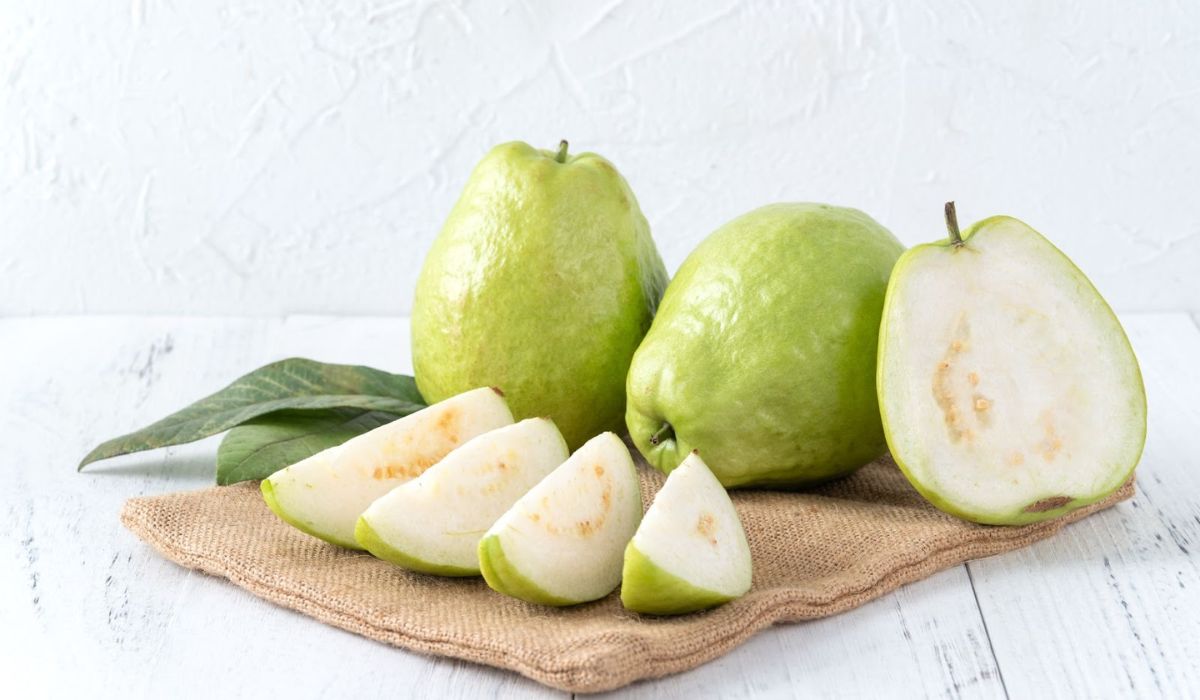
This pear-shaped Vietnamese fruit is the size of a softball and has a light green, rough skin. Guava from Guatemala in Vietnam has green skin with white or pink flesh and a mild, herbal taste.
Vietnamese people love guava, enjoying it either ripe or unripe, cut into pieces and dipped in chili salt. The light sourness of guava pairs well with salty and spicy flavors.
How to Eat
The whole guava is edible, so wash it before preparing. Cut the fruit like you would cut cantaloupe: slice lengthwise and then cut into pieces.
Guava has many culinary uses, though it is often eaten on its own. Agua fresca, a fruit drink often made with guava, is extremely popular in Latin American countries. Guava is also commonly made into candy, dried snacks, desserts, and sauces for meats. Due to its high pectin content, guava is particularly suited for making jellies, jams, and marmalade.
Flavor
Guava tastes like a combination of pineapple and strawberry, with a pear-like texture. It also has a flavor similar to passion fruit. Overall, guava has a sweet, yet not overly sweet, tropical flavor.
14. Coconut

Coconut is a classic fruit among tropical fruit lovers. No matter where you live, you’ve probably encountered a coconut at some point; they are large, brown, hairy fruits containing sweet white flesh. However, in its initial state, it is even larger, nearly the size of a basketball, and green in color.
How to Eat
Coconut flesh can be eaten fresh or processed into coconut milk by simmering grated coconut with milk or water and then straining it. This milk can be used in desserts, soups, or other dishes.
Flavor
Coconut has a rich and distinctive flavor. It can be slightly sweet with a nutty taste at the same time. The texture of the white flesh is chewy and almost dry. It can also have a woody flavor. However, most coconuts have a fairly neutral taste with a tropical flavor. Regardless of the type of coconut you use, it will add a fresh flavor to any dish.
15. Passion Fruit
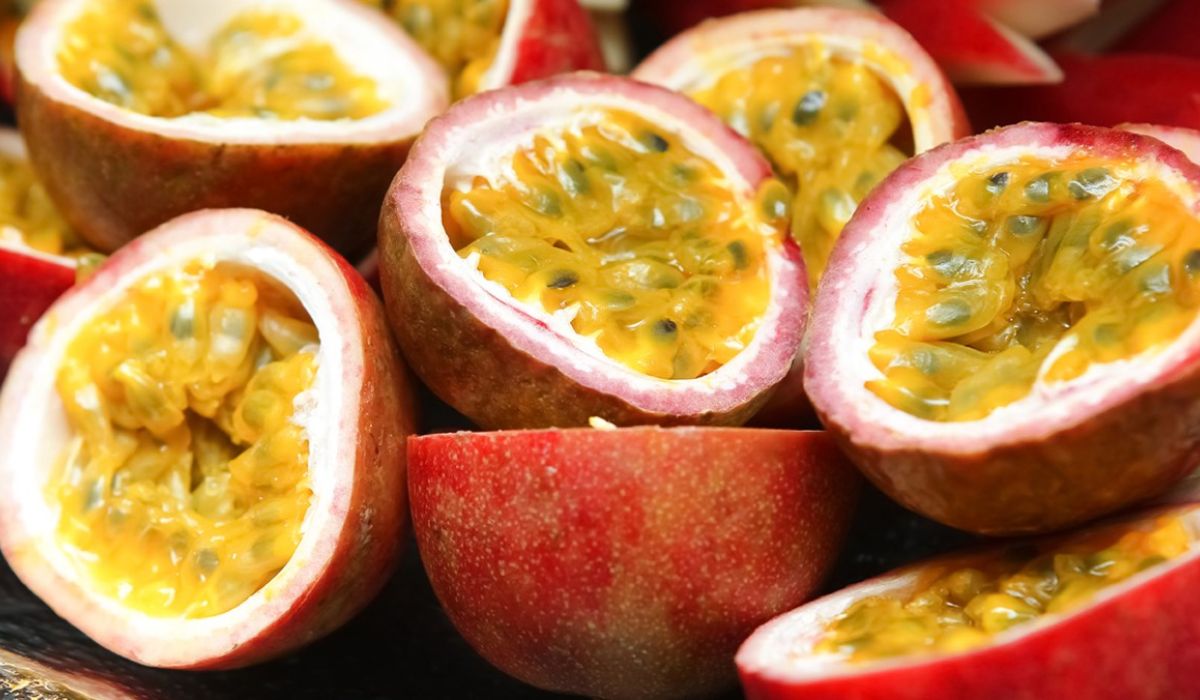
Passion fruit, purple and the size of a tennis ball, is a popular ingredient in Vietnamese cuisine. The seeds are edible and are often mixed with ice and milk to make smoothies or simple drinks like passion fruit lemonade. Passion fruit can be found at street cafes year-round. Try making juice (nước chanh leo) or combining it with yogurt, shaved ice, and a little sugar (sua chua chanh leo).
How to Eat
The thick skin can be gently peeled away by hand. Inside the passion fruit, you will find soft, golden flesh and black seeds, which can be scooped out with a spoon and used to make tarts and refreshing beverages.
Flavor
Passion fruit can be described as sweet, but it is quite sour when fresh. This combination of sweetness and sourness is what makes it interesting. The flavor is described as citrusy with hints of melon, pineapple, or kiwi. As the fruit ripens, it becomes sweeter, but more importantly, it develops complexity. Overripe passion fruit can even taste slightly fermented.
16. Tamarind
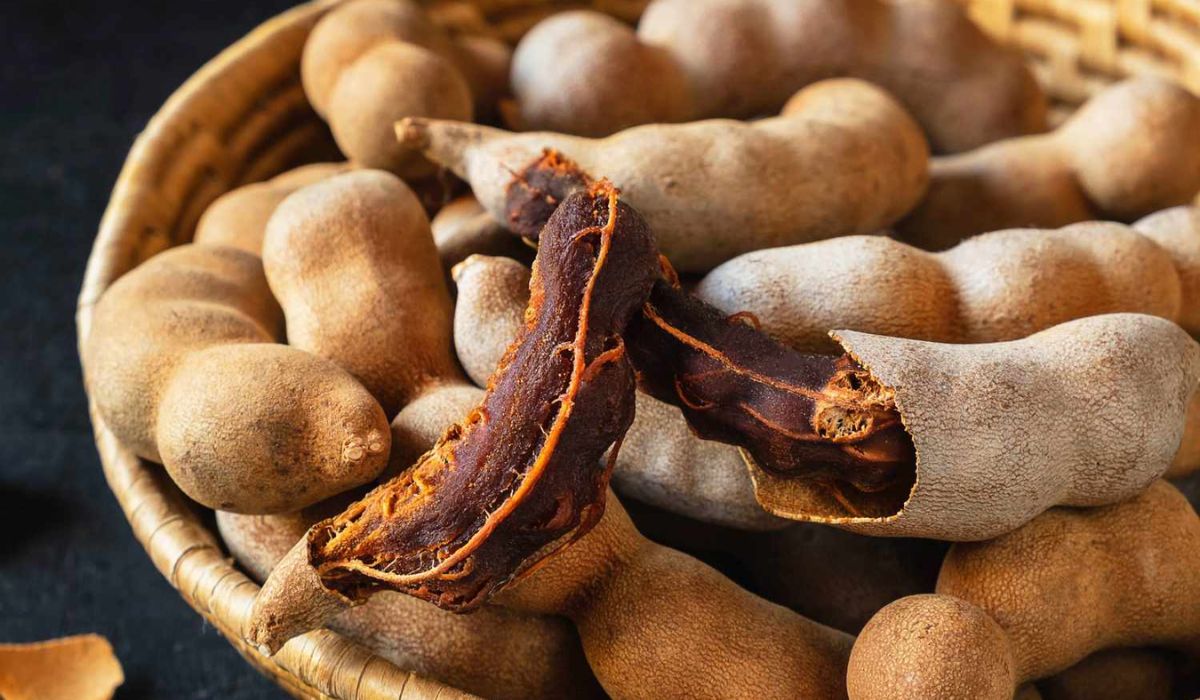
A staple fruit in Southeast Asian cuisine and Middle Eastern cooking, Tamarind delivers a burst of flavor to many dishes, from curries to sauces. Encased in a crispy outer shell, tamarind reveals a long, brown-red pulp with a sour, tangy taste similar to apricots, dried plums, and dates. Furthermore, tamarind paste provides a unique flavor to sauces and dips. So, the next time you want to experiment with new flavors, reach for tamarind!
How to Eat
Tamarind is eaten in various ways around the world. In India, tamarind is used to flavor curries and rice, and it can be made into sauces to accompany samosas and pakoras. It is also made into a lollipop candy called Chigali, used to flavor rasam soup, and found in some masala chai teas.
Flavor
Tamarind flavor ranges from sweet and sour to tangy and tart, often depending on the other ingredients it is mixed with. For example, sweet components like sugar can offset tamarind's sourness. The flavor can also vary based on the fruit's ripeness. Unripe tamarind is more sour, while ripe tamarind is sweeter.
17. Star Apple
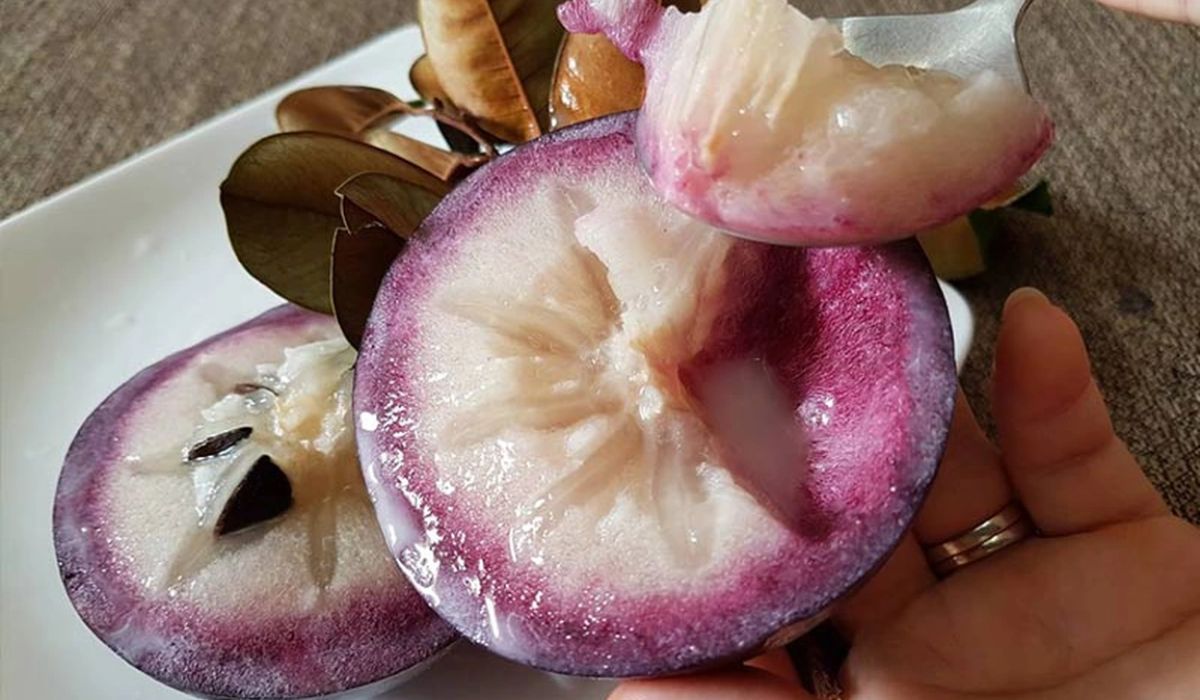
Also known as the caimito or cainito, the Star Apple (Chrysophyllum cainito) is a deep purple fruit named for the star-shaped pattern formed by its seeds. The fruits are very sweet, with a pulpy, jelly-like texture and a taste some compare to applesauce with hints of tropical fruits and grape. This spherical fruit, about the size of an orange, has a thick, shiny skin that is purple or green. The skin and rind are bitter, but the inner fruit is white and has a mild sweetness.
How to Eat
You can cut the fruit in half and use a spoon to scoop out the flesh (be cautious of the large, inedible seeds), or you can squeeze and roll it to extract the juice, then poke a hole to drink the milk directly.
Flavor
Milk fruit is very sweet, with a jelly-like texture and plenty of pulp. Its flavor is compared to apple sauce with hints of tropical fruit and grapes.
18. Snake Fruit
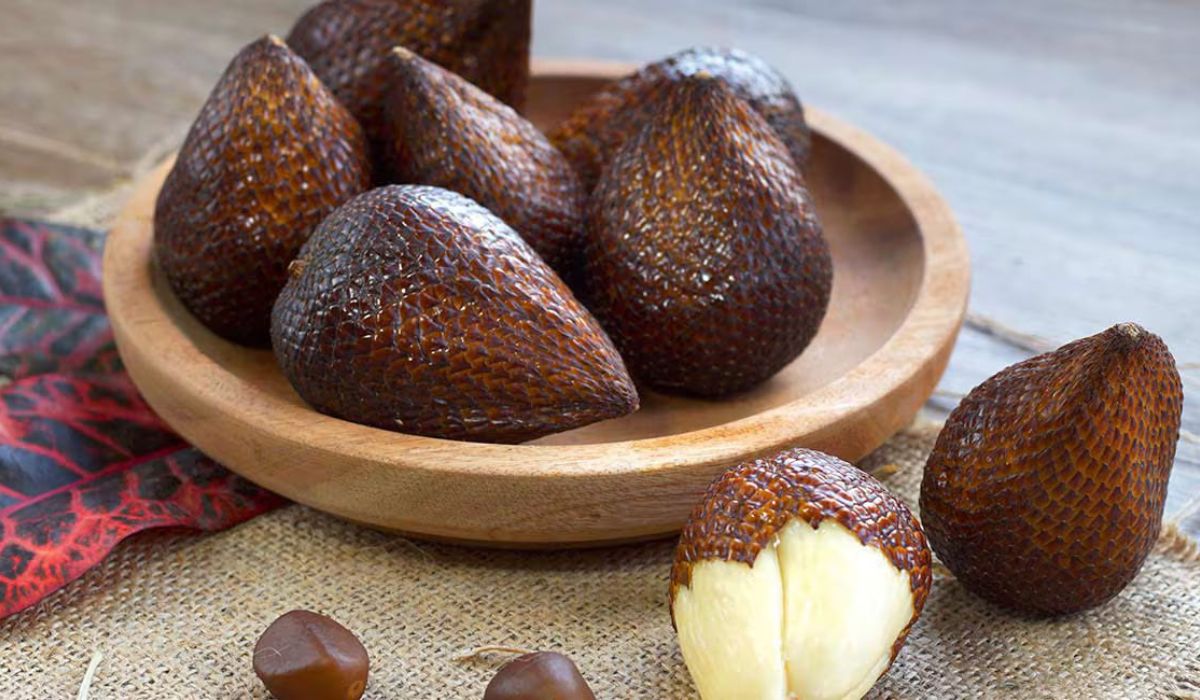
Despite its fearsome red-brown, spiky skin, Snake Fruit is easy to peel. Underneath its outer shell is a clove-like section with juicy, white or yellow flesh that has a honey-like sweetness with a hint of tartness. The unique blend of apple, banana, and pineapple flavors makes snake fruit, also known as salak, a delightful fruit. From traditional to modern cuisines, its versatility shines through, adding an exotic appeal to dishes.
How to Eat
There are several ways to enjoy this fruit. A common method is to eat it raw as a snack. Simply bite into the fruit and chew the flesh, being careful not to bite into the seed. Another way is to slice it thinly and add it to salads or fruit bowls. It can also be used to make jams, jellies, and other sweet treats.
Flavor
Properly ripe snake fruit has a dry and crispy texture, similar to bitter pineapple or jackfruit. The flesh is usually eaten raw but is also used to make wine, juice, and candy.
19. Papaya

Wrapped in a colorful, thin skin, Papaya flesh has a mild sweetness reminiscent of melon. With its buttery texture and fresh taste, papaya is often likened to a sweeter pumpkin, offering a versatile ingredient for juices, jams, and desserts. Its vibrant color and tropical flavor also make it a popular ingredient in cocktails and mocktails. Additionally, papaya seeds are rich in digestive enzymes, making them a valuable addition.
How to Eat
Papaya can be eaten raw or cooked and is often added to both savory and sweet dishes. Peel the skin and scoop out the seeds with a spoon. Although the seeds are edible, most people do not eat them. Papaya can be added to chicken dishes, salads, and stews. Some people grate the seeds and use the fruit as a boat for stuffing. Salsa and chutney recipes also incorporate finely chopped papaya. Sweet treats such as smoothies, frozen yogurt, and sorbet combine papaya with other fruits to create delicious desserts.
Flavor
Papaya has a mild flavor, and its sweetness depends on the ripeness of the fruit. It has a taste similar to melon. The seeds have a spicy flavor, like pepper.
20. Jackfruit
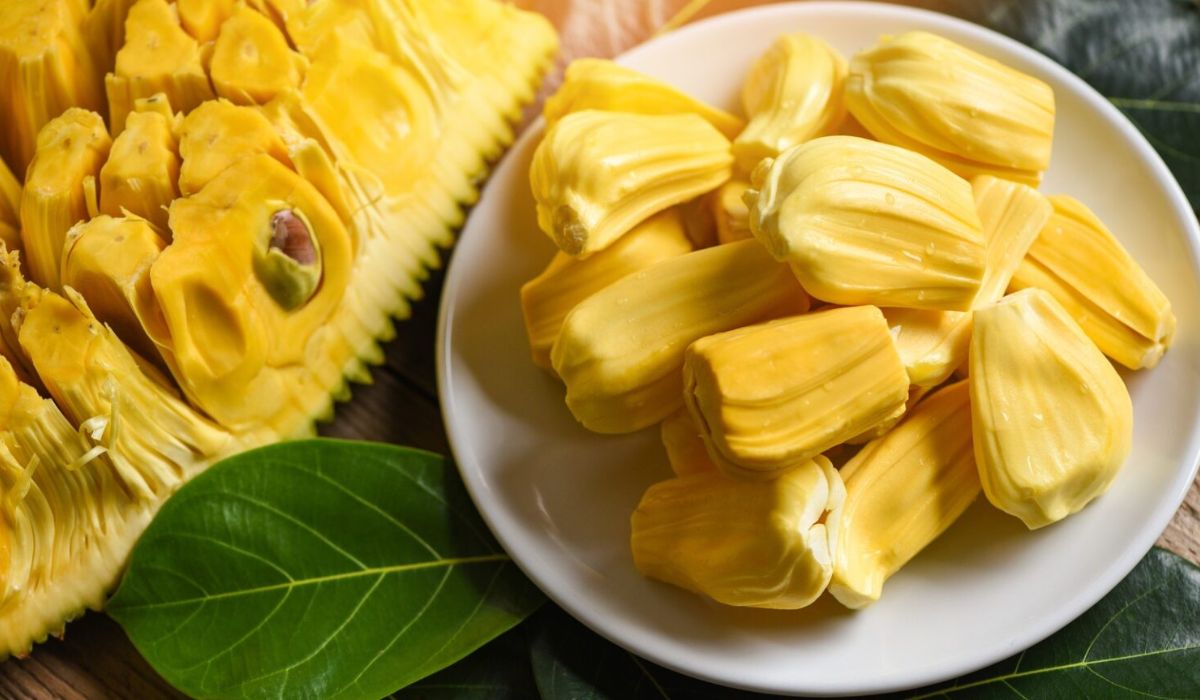
Jackfruit stands out with its distinctive appearance, resembling a slightly elongated melon among other Southeast Asian fruits. Its vibrant green skin is covered in small, smooth bumps. The fibrous, dense texture of jackfruit is reminiscent of mango or pineapple. Its flavor is a topic of debate among enthusiasts; some compare it to a sweet blend of mango and pineapple, while others find it similar to pulled pork due to its fibrous texture.
How to Eat
The fibrous flesh of this fruit can be quite sticky, so wearing gloves may help. After preparing it, here's what you need to do:
-
Cut the fruit in half and use your hands or a knife to separate the flesh from the rind and core.
-
Make a cut along each fruit to remove the seeds.
-
Cut or tear into pieces as desired. You can also eat the seeds. Boil them for 20 to 30 minutes (or roast in a 400°F oven for 20 minutes) until soft. Let them cool, then peel and eat.
Flavor
Ripe jackfruit has a mild, sweet flavor, often described as a combination of banana, apple, and mango. In contrast, unripe jackfruit has a neutral flavor and a texture similar to pulled pork, making it a popular meat substitute in savory dishes.
Source: Wikipedia